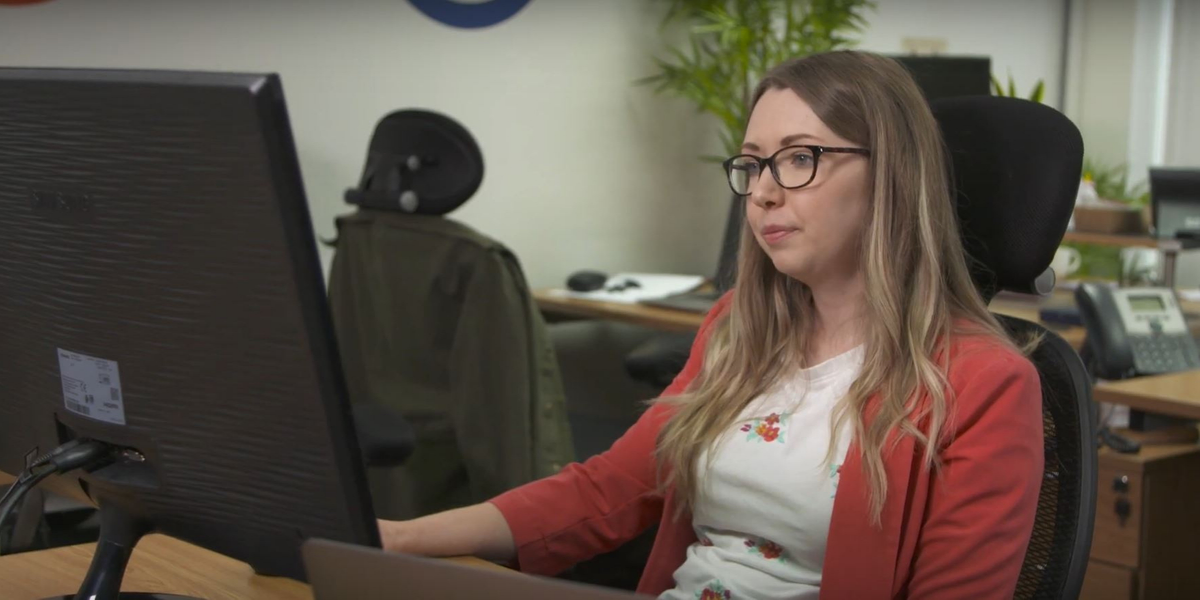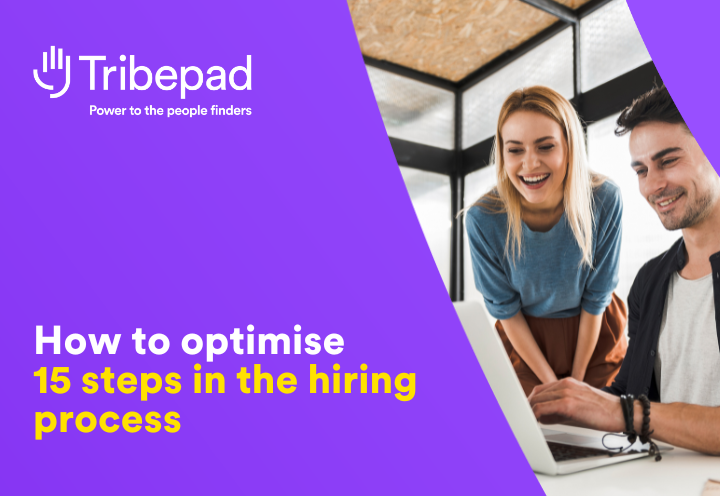Video interviewing is a mature solution that’s delivering proven returns for businesses of every shape and size in every industry. Adoption has snowballed.
Which brings us to an interesting question: what’s everyone else doing? What’s holding some businesses back?
It’s not a facetious question. It’s an honest one. One we’re going to answer, if you keep reading.

Is video interviewing really so mature?
Our in-house stats show a 327% increase in video interviewing use from 17-18 to 18-19. And we recently ran a survey of HR and recruitment professionals at RecFest 2019 and 89% of survey respondents said their business uses video interviewing.
Now, obviously we’re not the only video interviewing provider (why does it feel like we’re breaking a sacrosanct rule to admit we have competitors?!) so those stats alone don’t reflect the entire industry.
But the wider industry tells the same story. OfficeTeam found that 63% of HR managers were using video interviewing – and that was back in 2012.
Video interviewing use has exploded. Little wonder, given proven ROI like faster time-to-hire, lower cost-per-hire and increased quality-of-hire.
That’s the story. Let’s talk about why some businesses haven’t yet entered the narrative. Here are the three most likely probabilities.
1. You’re not sure video interviewing will work for you.
You see the stats and you believe them. Sure, the likes of Selfridges, the BBC and Computacenter are enjoying huge ROI with video interviewing.
BUT they’re not like you. They’re in a different industry, recruiting more people than you, or different people than you, using different processes. It’s alright for them.
Let’s talk about that.
Video interviewing is fantastic for high-volume recruitment, that’s true. The most impressive time-to-hire gains come when you replace scores of telephone or face-to-face interviews with video interviewing – which takes a fraction of the time.
The stereotype is graduate recruitment – where your Deloittes or Tescos get thousands of applications to their graduate schemes.
But video interviewing isn’t just for graduate recruitment. It’s not for any particular industry.
We’ve got a robust customer base in retail, hospitality, telecoms, media, healthcare, finance, recruitment and across the public sector. Some are traditional high-volume recruiters – hiring hundreds or thousands of people. But many aren’t.
Video interviewing works well for blue-collar recruitment, part-time recruitment, flexible and contingent recruitment, C-level recruitment, managerial recruitment and apprenticeship recruitment too.
That’s because accelerating time-to-hire isn’t the only benefit of video interviewing.
One of the biggest benefits is improving your candidate experience. Video interviewing is heaps more convenient for candidates, who can interview whenever and wherever best suits. No time off work. No fear that their current boss will discover they’re interviewing. No travel expenses.
The candidate experience matters whether you’re hiring ten or ten thousand people.
More so, now video interviewing has become mainstream. The truth is, widespread adoption means most candidates will’ve been exposed to video interviewing (whether that’s one-way video interviewing or two-way tools like Skype or FaceTime).
Now, businesses who don’t adopt aren’t only leaving recruitment delivery gains on the table, like improving time-to-hire. You also leave candidates wondering why your candidate experience doesn’t stack up.
2. You’re not sure how to use video interviewing.
50% of our survey respondents admitted they’re not quite sure how video interviewing should slot into their processes.
So you either invest but don’t see value because you’re not embedding video interviewing effectively into your business. Or you don’t invest and leave value on the table because you didn’t know quite how to act.
Let’s talk about that.
There’s a strange paradox at the heart of video interviewing.
Video interviewing is changing everything. Businesses using video interviewing see faster time-to-hire, lower cost-per-hire and better quality-of-hire. They never look back: they’ve set new benchmarks for recruitment success.
But also, video interviewing will never change the fundamentals of the recruitment process. Whichever tools and technologies you embrace to streamline, the process itself is timeless. Find candidates, assess candidates, hire candidates.
So making video interviewing work for you – however unique your processes, whichever industry you’re in – is easy.
Video interviewing can replace telephone screening
We have customers who use video interviewing to replace telephone screening, for instance. That works well because telephone interviews are typically awful – they’re time-consuming and ineffective.
Missed calls. Voicemails. Endless scheduling and rearranging. Then bad lines or mumbling candidates threaten your ability to make accurate quality decisions.
Video interviewing can replace first-stage face-to-face interviews
We also have customers who use video interviewing alongside telephone screening, but to replace first-stage face-to-face interviews. That works especially well if you’re set-up so junior recruiters or sourcers pre-qualify candidates, ready for senior HR interviews.
You don’t have to worry about poor candidates slipping through because watching video interviews only takes moments. Video interviewing is probably 90% faster than face-to-face interviewing. And you can use the process to train juniors on your team to improve quality-of-hire from screening onwards.

Video interviewing can be your only interview method
We also have customers who use video interviewing as their only interview method. That works well when you’re hiring for remote, flexible or work-from-home employees.
Video interviewing works for HR teams who work from the same place
We have customers who have one unified HR team, who see value from video interviewing because it slashes admin time and gives a richer view on candidates from earlier in the process.
Video interviewing works for HR teams who’re dispersed
But we also have customers who use video interviewing because their HR team is dispersed, and it’s an easy way to bring everyone onto the same page irrespective of location, time-zone, seniority, and so on. The Head of HR in Denmark can give feedback when they arrive in-office; the hiring manager in Singapore can reply six hours later.
The point is, there’s no right and wrong way. Video interviewing can slot seamlessly into your processes – no matter what your processes are.
(And our team work closely with you anyway, to help you build Tribepad into your recruitment function in the most effective way. So we can try stuff out to find what suits you best).
3. You’re sceptical about the recruitment technology hype
“Recruitment is dead”; “technology is replacing recruiters” – you’ve heard it all before. You simply don’t buy it. Video interviewing will be just another fad, and you’re not being sucked in.
Let’s talk about that.
I mean, we talked about that already. A few weeks back. But the point was, technology and recruitment are symbiotic partners.
Technology like video interviewing paints a more vibrant picture of candidates from an earlier stage, with less recruiter involvement – BUT the involvement it slashes are the bits you didn’t need anyway. Like scheduling and rearranging interviews. Spending hours interviewing poor-quality candidates.
Which means video interviewing gives recruiters more time to spend on the things where you really add value. Like spending extra time with the best candidates, to maximise your chances of bringing high-quality people into the business.
Video interviewing delivers a lower touch experience at one stage in the process – so you can deliver a higher-touch experience where it matters most.
You’ll never eliminate people from the people industry, and nobody’s trying. Video interviewing – like a great ATS, like a great HCM – help make the people in the people industry more effective.
Get off the video interviewing fence
Few tools or technologies secure total market adoption – but video interviewing is as close to a no-brainer as you’ll get. Whatever your industry, whatever your process, whoever you hire, wherever your team.
Let us help you down from the fence.
You’ll love using the Tribepad Video Interviewing platform – and not only because it’s beautiful, sleek and modern. (Our developers have been working super hard on our new look platform and it’s gorgeous.)
It’s also super simple to use and genuinely intuitive – so everyone who’s involved with hiring (including that stubborn product manager who complains about everything…) can use the dashboard without training or support (although it’s there if you need it, of course)
And the platform uses AI to analyse all interviews, providing insights next to each candidate like other similar candidates and vocabulary choices – to help your decision-making.
All in all, it’s a pretty fantastic tool to add to your toolbox. Not that we’re biased at all.
Let us show you. Even if you’re still not sure video interviewing is for you, let’s have an honest conversation; no hard sell. We promise to take your concerns seriously, and we’ll be totally honest about how this could work for you. We also offer a discretionary three-month free trial, so you can experience video interviewing for your business, completely risk-free. Contact us today.




